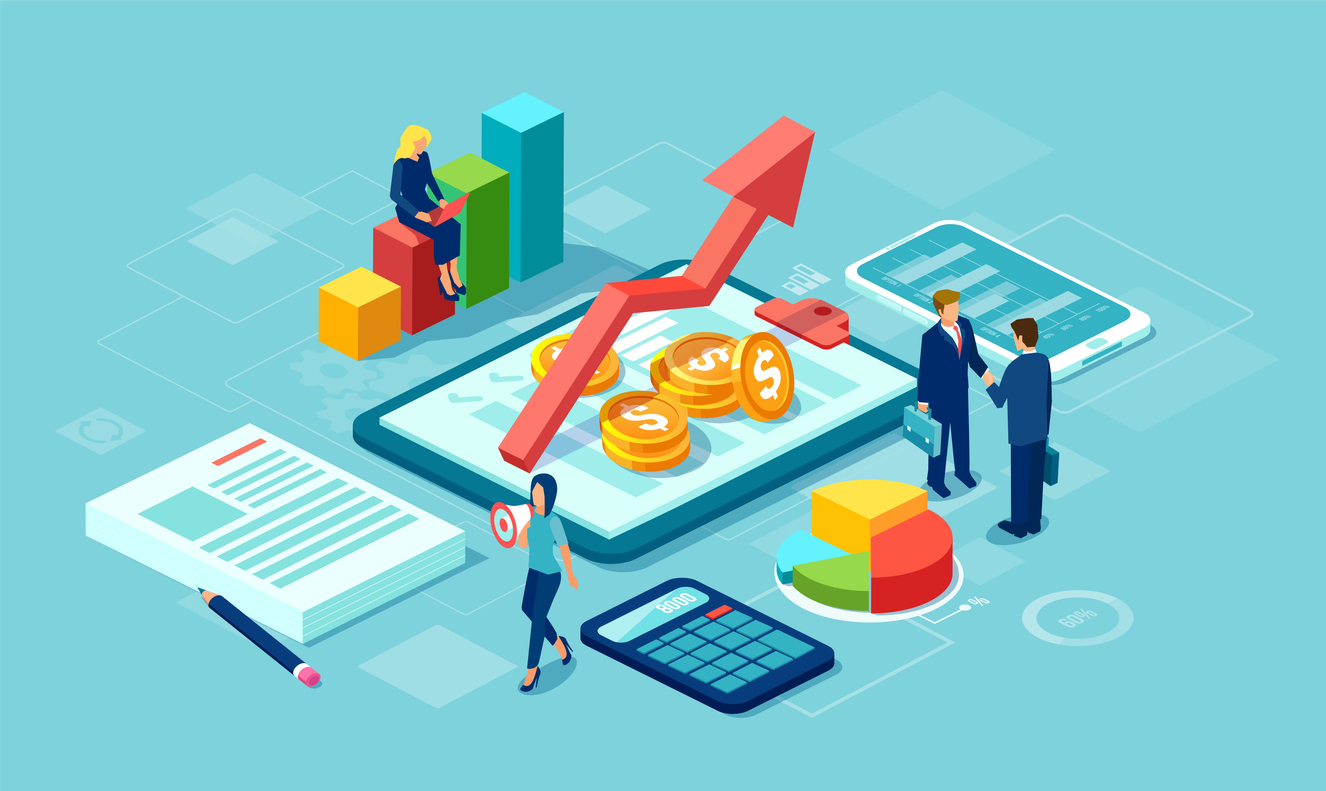Retail Budgeting Software: Benefits, Features & Tips to Choose the Right Solution
By Multidev Technologies · PUBLISHED February 19, 2024

Despite technological advancements, many businesses, irrespective of size or industry, view budgeting and forecasting as a major hurdle. Unlike considering budgeting software, many retailers still rely on the manual creation of budgets and spreadsheets, resulting in a time-consuming process. Leading retailers tackle budgeting challenges by embracing new technologies and implementing best practices, enabling them to create accurate budgets, save time, foster collaboration, and enhance decision-making. This article emphasizes how budgeting software aids dynamic forecasting, highlights its key features, and provides considerations for selecting the right solution for your retail enterprise.
I. What is Retail Budgeting Software?
Retail budgeting software is a specialized financial management tool designed to help retail businesses plan, track, and manage their budgets effectively. It provides retailers with a comprehensive platform to oversee and control their financial activities, ensuring they allocate resources efficiently and make informed decisions to achieve their financial goals.
Managing finances in the retail sector involves juggling various aspects such as inventory, sales, expenses, and forecasting. Retail Budgeting Software serves as a compass, providing a clear direction in navigating this complex landscape. The benefits are manifold and extend far beyond basic budgeting.
II. Benefits of Retail Budgeting Software:
Retail budgeting software provides a range of benefits for businesses in the retail sector, helping them manage finances more efficiently and make informed decisions. Here are some key advantages:
1. Improved Financial Visibility:
Retail budgeting software provides a bird’s eye view of your financial health. Real-time insights into sales, expenses, and profits empower decision-makers to make informed choices promptly.
2. Enhanced Efficiency:
Automation of repetitive financial tasks not only saves time but also reduces the likelihood of errors. This efficiency allows your team to focus on strategic initiatives rather than getting bogged down by manual processes.
3. Accurate Forecasting:
Predicting future trends and demands is a fundamental aspect of retail success. Budgeting software employs advanced algorithms to analyze historical data, helping businesses make accurate forecasts and plan accordingly.
4. Cost Optimization:
By identifying areas of excessive spending or inefficient resource allocation, retail budgeting software helps businesses optimize costs. This, in turn, improves overall financial performance and contributes to a healthier bottom line.
5. Data-Driven Decision Making:
Access to accurate and up-to-date financial data empowers decision-makers to make informed choices. Retail budgeting software enables data-driven decision-making, reducing the reliance on gut feelings and increasing the likelihood of successful outcomes.
6. Compliance and Risk Management:
Retail budgeting software often includes features that help businesses adhere to financial regulations and industry standards. It also aids in identifying and mitigating financial risks, promoting a secure and compliant financial environment.
III. Key Features of Retail Budgeting Software:
A robust retail budgeting software has the following set of features:
1. Budget Planning and Allocation: The software allows retailers to create detailed budgets for various aspects of their business, such as sales, marketing, inventory, and overhead expenses. It facilitates the allocation of financial resources based on historical data, industry trends, and future forecasts.
2. Expense Tracking: Retailers can track and monitor their expenses in real time. This feature helps identify areas where costs can be optimized and ensures that the business stays within its allocated budget.
3. Financial Reporting: Retail budgeting software generates detailed financial reports, providing insights into key performance indicators (KPIs), profitability, and overall financial health. These reports help decision-makers understand the business’s financial standing and make informed choices.
4. Forecasting and Planning: Advanced algorithms analyze historical data to assist retailers in making accurate predictions about future sales, demand, and financial trends. This aids in strategic planning and ensures that the business is prepared for potential challenges.
5. Integration with Other Systems: To provide a holistic view of the business, retail budgeting software often integrates with other essential systems, such as inventory management, point-of-sale (POS), and accounting software. This integration ensures seamless data flow across different departments.
6. Scalability: Retail businesses evolve, and the software should be scalable to accommodate growth. Scalability ensures that the solution remains effective as the business expands, supporting increased data volume and complexity.
7. User-Friendly Interface: A user-friendly interface is crucial for widespread adoption within the organization. Intuitive design and ease of use reduce the learning curve for employees, allowing them to navigate the software efficiently.
8. Customization: Each retail business has unique financial requirements. Retail budgeting software should offer customization options to tailor the tool to the specific needs and workflows of the business.
IV. Tips to Choose the Right Budgeting Software Solution
Choosing the right retail budgeting software is a critical decision for any retail business. To ensure that the software aligns with your specific needs and provides optimal value, consider the following key factors during the selection process:
- Assess Your Business Needs: Before diving into the sea of available options, conduct a thorough assessment of your business requirements. Understand your financial workflows, pain points, and areas that need improvement.
- Seamless Collaboration: Look for solutions that allow multiple users to work concurrently on budgets, fostering efficient financial analyses and preventing duplication of efforts.
- Integration with Multiple Data Sources: Ensure the software seamlessly integrates with various data sources, such as accounting systems and CRM software, to build budgets on accurate and diverse data.
- Ease of Use: Prioritize user-friendly interfaces with intuitive navigation. Adequate customer support and help desk resources contribute to a positive user experience.
- Importing/Exporting Data: Choose software that facilitates easy data import from external sources and enables smooth data export to formats like Excel sheets for seamless business operations.
- Customizability: Opt for a solution that offers extensive customization options for charts of accounts, number formats, reporting periods, headers, and footers, and more. This ensures the software aligns with your specific business.
- Read Reviews and Seek Recommendations: Research is vital. Read reviews from other retailers who have implemented the software. Seek recommendations from industry peers to gain insights into real-world experiences with the solution.
- Training and Ongoing Support: Plan ahead, ensure proper setup, train your staff, and monitor results. A comprehensive training program can ensure that your team is proficient in using the software, minimizing disruptions during the implementation phase. Regularly communicate with your software provider, reporting issues or feedback. Utilize analytics, reports, and surveys to gauge impact and ROI, making necessary improvements.
Conclusion:
Embracing modern solutions like budgeting software is crucial for overcoming persistent challenges in the realms of budgeting and forecasting. While many retailers continue to face hurdles, adopting innovative technologies and best practices proves instrumental in streamlining processes, saving time, fostering collaboration, and enabling effective decision-making.
As businesses recognize the pivotal role of budgeting, the implementation of dynamic forecasting through budgeting software emerges as a strategic imperative. By understanding the benefits and exploring key features and considerations outlined in this article, businesses can make informed choices to elevate their budgeting practices and navigate the complexities of financial management with greater efficiency and accuracy.
Streamline Your Budgeting Process with ChainDrive Integrated Budgeting Software
Accelerate business growth with ChainDrive Integrated Planning, Budgeting, and Forecasting Software. ChainDrive’s software goes beyond traditional methods, offering a comprehensive suite of features that enhance your organization’s accuracy, efficiency, and collaboration. From dynamic forecasting capabilities to seamless integration with various data sources, this software empowers retail businesses to make informed financial decisions.
With a user-friendly interface, customizability, and excellent customer support, ChainDrive’s Integrated Budgeting Software ensures a smooth and effective budgeting experience. Elevate your retail financial management with a solution that understands and addresses the industry’s specific challenges. Take the first step towards optimizing your retail budget management by scheduling a personalized demo with ChainDrive today.





